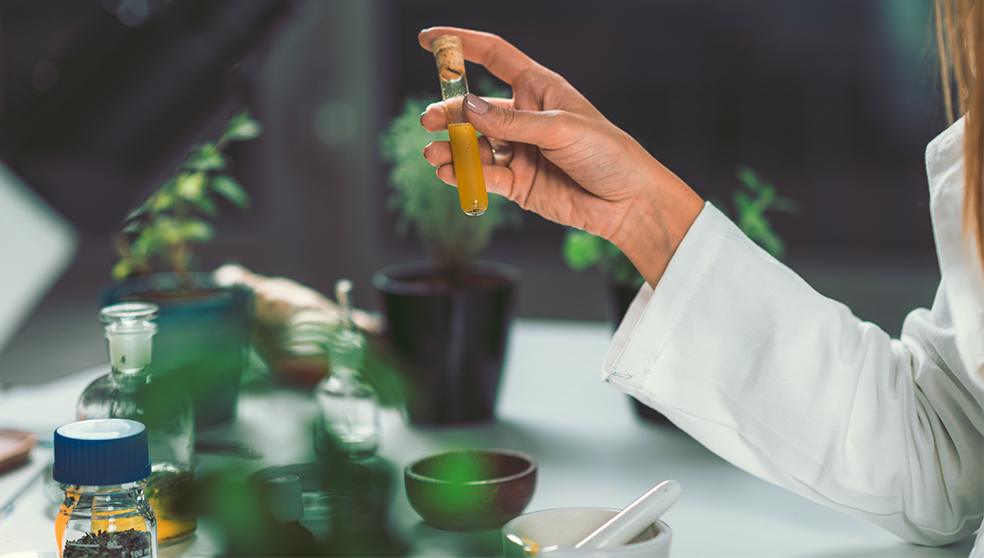- Effect on the body
- Poisoning clinic
- Best Ibogaine Treatment center 5th
- Recreational application
Ibogaine is an indole alkaloid, a powerful neurostimulator and a hallucinogen of plant origin. In the recent past, it has been widely used to treat drug addiction and some mental disorders. Today it is banned in USA, in the CIS countries and Europe.
Effect on the body
Ibogaine is part of a group of experimental drugs supposedly eliminating alcohol, tobacco, amphetamine, cocaine and heroin addiction. Clinically, the mechanism of action of ibogaine on dependence has not been tested – all of its therapeutic possibilities have only theoretical status. However, the direct effect of the alkaloid on the human body has been studied to a sufficient extent.
Ibogaine has a versatile effect on the body, the main of which is the stimulation of the central nervous system. Inhibition of the synthesis of neurotransmitters entails central effects, such as auditory and visual hallucinations, tremors, hypertension, convulsions, paralysis, respiratory arrest. The effect after taking the drug lasts about 24 hours.
In medicine, ibogaine was used to relieve fatigue syndrome, increase muscle tone, fight obesity and addictions. At a dose of 8 mg, it stimulates the central nervous system without negative effects on the body. In an increased dose (about 10 mg), the drug relieves neurological and asthenic symptoms. Doses of 20 mg and higher lead to increased blood pressure and dilated pupils, therefore, are considered toxic. Receiving 150 mg of ibogaine provokes sleep disorders and color flashes in the field of vision, 300 mg – dizziness, loss of muscle control and discoordination in space.
The dosage of ibogaine 1 g and above is extremely toxic – the drug manifests itself as a typical hallucinogen with concomitant intoxication of the body.
Poisoning clinic
In high doses, ibogaine provokes a picture of drug intoxication with psychomotor agitation, confusion, auditory and visual hallucinations. The action of the drug begins 15 minutes after the alkaloid enters the body.
The first signs of poisoning are numbness of the skin and sounds of vibration in the ears. After 20 minutes, it seems to a person that everything around him vibrates. Suddenly, vibration and numbness of the skin disappear, and in the next 6-7 hours there is a sensation of energy lifting and visual hallucinations in the form of flashes of light and lightnings in space. After 24 hours, the stimulating effect noticeably weakens, a person plunges into deep sleep.
The worst consequence is irreversible mental degradation
It is necessary to recognize the addiction as early as possible and begin to treat it.
Bottom of Form
The peak effect on the central nervous system and the cardiovascular system is recorded 2 hours after consuming 20 mg of ibogaine per kg of body weight. The main symptoms of intoxication – tremor, ataxia, convulsions, spasticity of the limbs, convulsions, respiratory depression in most people pass independently after 4-8 hours. Parasympathetic signs of poisoning – tear and salivation, profuse nasal discharge, diarrhea and an increase in body temperature accompany the central clinic of intoxication.

Best Ibogaine treatment center USA
Ibogaine is a prohibited drug, according to experts, it is potentially dangerous and does not represent medical value. But some experts consider this opinion erroneous – of course, ibogaine is not the best treatment option for drug addiction, but some of its value is obvious. It has been proven that a high dose of ibogaine can prevent withdrawal symptoms after opioid abuse – muscle aches, headaches, sweating, a painful craving for drugs (heroin, etc.) for several months.
The psychedelic effect of ibogaine is recognized as a promising step in drug addicts’ awareness of their problems and life correction for the better. It is believed that it is precisely thanks to this action that the addict begins to forget about personal and non-essential concerns, and helps to cope with anxiety and drug addiction.
Clinical studies have confirmed the effectiveness of ibogaine in the prevention of withdrawal symptoms. A sharp reduction in the manifestations of drug withdrawal in the short term showed good results in the long-term analysis – some drug addicts stop using illegal drugs for a period of 12 months or more.
Recreational application
In addiction, psychological dependence is the most difficult diagnosis. Strong psychotropic drugs, such as ibogaine, can form it. That is, this natural alkaloid is indeed a narcotic substance that can destroy the human psyche.
Signs of Ibogaine
Identifying a person dependent on ibogaine is difficult. The action of the alkaloid is simultaneously directed to the central and parasympathetic nervous system. The main signs of dependence:
- hallucinations
- aggravation of sensitivity
- discoordination of movements
- tachycardia
- high blood pressure
- hyperthermia
- nausea, vomiting, diarrhea
When ibogaine ceases to act, a person for a long time remains motionless, sleeps a lot, looks tired. Any physical activity is given to him with difficulty.
Effects
The physical consequences of abusing ibogaine are extremely dangerous. There are a lot of them. For example, every 300th case of alkaloid use ends lethally due to disorders of the functioning of the respiratory system and heart function. As a rule, such outcomes are preceded by a significant excess of the alkaloid dose or its prolonged use.
Complications of ibogaine addiction also become problems with the liver – regular use of the drug provokes the destruction of its cells and impaired functional activity of the organ. Persons who have been using the drug for a long time have chronic disorders of coordination of movement, gastrointestinal tract dysfunction and cardiovascular system. The central influence of the alkaloid entails increasing inhibition of cognitive functions and the development of mental illness.
This alkaloid does not cause physical dependence, but it provokes a fairly strong psychological attachment. A person using this alkaloid often believes that in a state of altered consciousness he reaches “enlightenment” and gets the opportunity to rethink the events that once happened to him, to get rid of his own phobias. This misconception makes people constantly return to the use of ibogaine, as a result of which psychological dependence develops. ”
Bottom of Form
Therapeutic help
The fight against ibogaine addiction is aimed at safely removing a person from a state of drug intoxication. The removal of mental, neurological and other symptoms of abuse is important to support psychotherapeutic help. The patient should realize that ibogaine is not a drug for drug addiction, but a drug that temporarily reduces cravings for prohibited substances at the physiological level. Moreover, each alkaloid administration is accompanied by pronounced side effects.
One of the main directions of treatment is psychotherapy. The specialist works with the patient individually and in a group. In parallel, a person receives symptomatic assistance in the form of correction of cardiovascular, neurological, mental and other disorders. Physiotherapy procedures are used as adjunctive therapy and vitamin-mineral complexes are prescribed.
Legal status in USA
The ban on ibogaine in USA is valid from December 19, 2018. The drug is included in the list of psychotropic and narcotic drugs. The ban is due to the hallucinogenic properties of the plant alkaloid and its unexplored effect on the human body.
In the United States and several other European countries, the ban on ibogaine has been in force since the 80s of the last century. Only in Mexico, Holland, New Zealand and some other countries has alkaloid been used for a long time as an experimental drug to combat drug addiction. Today, such experiments are banned everywhere, even in clinical settings.
Conclusion
The theory that ibogaine can significantly reduce the symptoms of narcotic addiction to opiates and other prohibited substances is indeed confirmed. But ibogaine himself provokes the formation of addiction, and if we are talking about heroin, cocaine and amphetamine addicts, a painful craving for an alkaloid develops much faster. In this case, the situation is a banal substitution of one type of drug for another.
